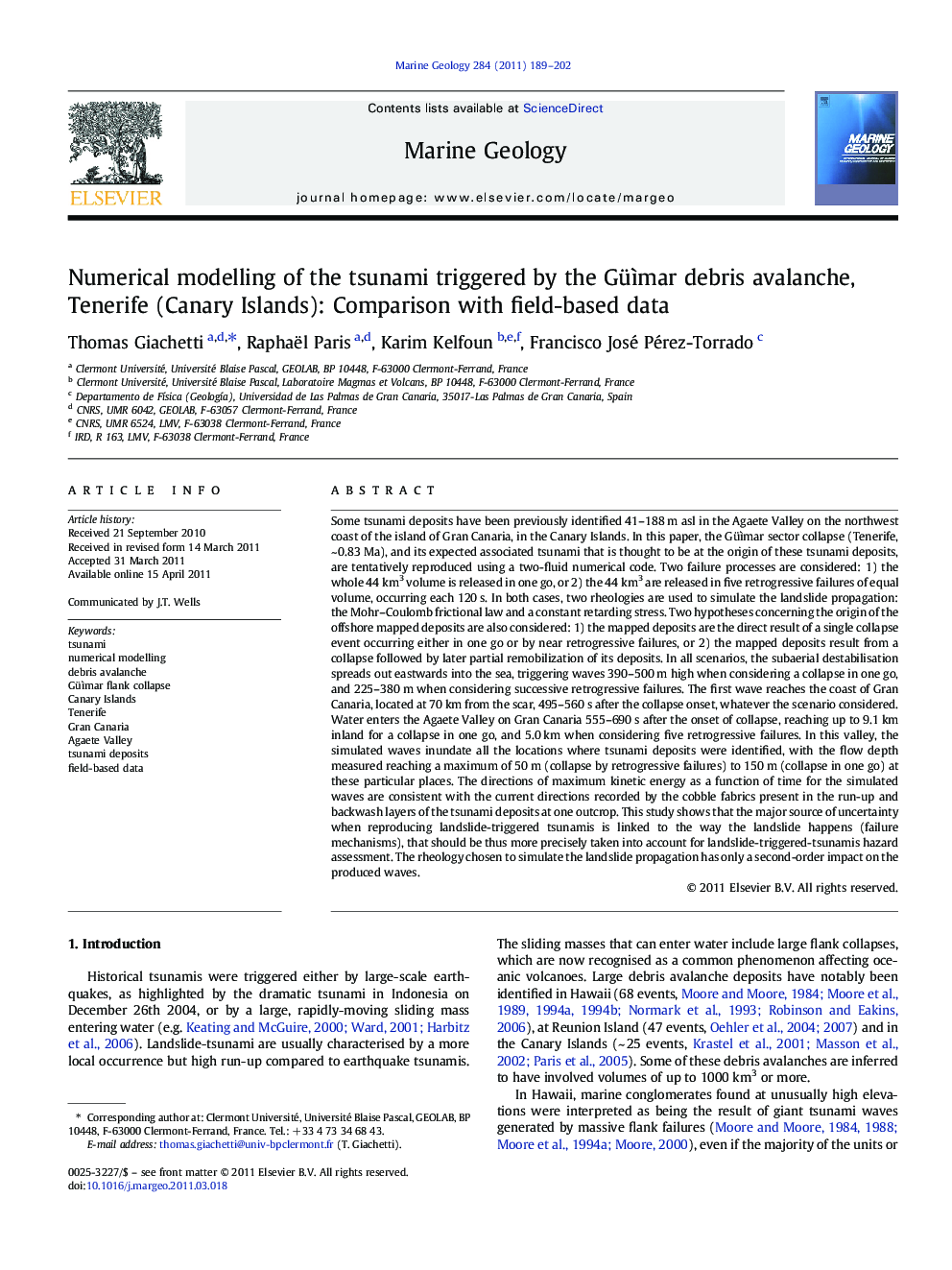| کد مقاله | کد نشریه | سال انتشار | مقاله انگلیسی | نسخه تمام متن |
|---|---|---|---|---|
| 4718658 | 1639136 | 2011 | 14 صفحه PDF | دانلود رایگان |

Some tsunami deposits have been previously identified 41–188 m asl in the Agaete Valley on the northwest coast of the island of Gran Canaria, in the Canary Islands. In this paper, the Güìmar sector collapse (Tenerife, ~ 0.83 Ma), and its expected associated tsunami that is thought to be at the origin of these tsunami deposits, are tentatively reproduced using a two-fluid numerical code. Two failure processes are considered: 1) the whole 44 km3 volume is released in one go, or 2) the 44 km3 are released in five retrogressive failures of equal volume, occurring each 120 s. In both cases, two rheologies are used to simulate the landslide propagation: the Mohr–Coulomb frictional law and a constant retarding stress. Two hypotheses concerning the origin of the offshore mapped deposits are also considered: 1) the mapped deposits are the direct result of a single collapse event occurring either in one go or by near retrogressive failures, or 2) the mapped deposits result from a collapse followed by later partial remobilization of its deposits. In all scenarios, the subaerial destabilisation spreads out eastwards into the sea, triggering waves 390–500 m high when considering a collapse in one go, and 225–380 m when considering successive retrogressive failures. The first wave reaches the coast of Gran Canaria, located at 70 km from the scar, 495–560 s after the collapse onset, whatever the scenario considered. Water enters the Agaete Valley on Gran Canaria 555–690 s after the onset of collapse, reaching up to 9.1 km inland for a collapse in one go, and 5.0 km when considering five retrogressive failures. In this valley, the simulated waves inundate all the locations where tsunami deposits were identified, with the flow depth measured reaching a maximum of 50 m (collapse by retrogressive failures) to 150 m (collapse in one go) at these particular places. The directions of maximum kinetic energy as a function of time for the simulated waves are consistent with the current directions recorded by the cobble fabrics present in the run-up and backwash layers of the tsunami deposits at one outcrop. This study shows that the major source of uncertainty when reproducing landslide-triggered tsunamis is linked to the way the landslide happens (failure mechanisms), that should be thus more precisely taken into account for landslide-triggered-tsunamis hazard assessment. The rheology chosen to simulate the landslide propagation has only a second-order impact on the produced waves.
Research highlights
► The Güìmar sector collapse and its associated tsunami are reproduced numerically.
► Two failure processes are considered.
► Two rheologies are used to simulate the landslide propagation.
► Two hypotheses concerning the origin of the offshore mapped deposits are considered.
► The simulated waves inundate all the locations where tsunami deposits were identified.
Journal: Marine Geology - Volume 284, Issues 1–4, 1 June 2011, Pages 189–202